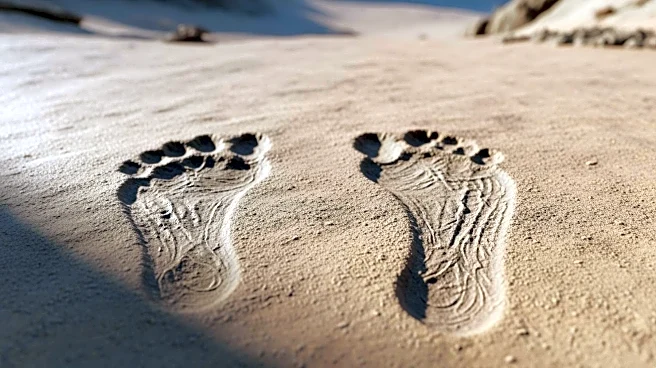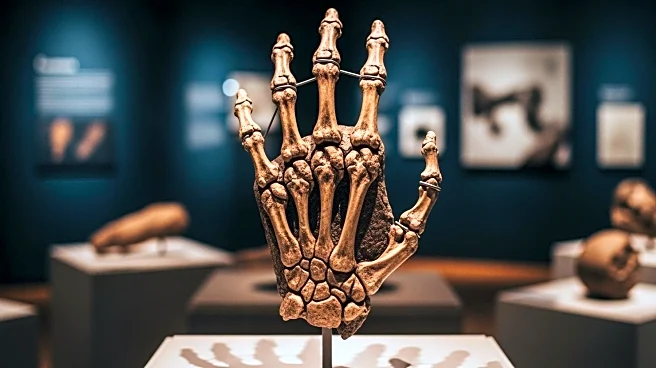What's Happening?
Between 2019 and 2021, a team led by paleoanthropologist Carrie Mongle from Stony Brook University discovered fossil remains near Kenya's Koobi Fora. These fossils, labeled KNM-ER 101000, date back approximately
1.52 million years and include hand and foot components of Paranthropus boisei. This discovery provides the first concrete evidence that Paranthropus boisei and early Homo coexisted over a million years ago. The fossils reveal that Paranthropus boisei, previously thought to be a simple plant-eater, had human-like hands and feet, suggesting a more dexterous and earth-bound species than previously believed.
Why It's Important?
The discovery of these fossils is significant as it challenges previous assumptions about the capabilities and lifestyle of Paranthropus boisei. The presence of human-like hands and feet suggests that this species may have had the ability to use tools, which was previously thought to be a distinguishing feature of early Homo species. This finding provides new insights into the evolutionary history of hominins and suggests that the development of tool use and dexterity was not exclusive to the Homo lineage. It also highlights the complexity of human evolution, showing that multiple hominin species with varying capabilities coexisted and interacted.
What's Next?
The discovery opens up new avenues for research into the evolutionary history of hominins. Scientists may focus on further excavations in the Turkana Basin to uncover more fossils that could provide additional insights into the lifestyle and capabilities of Paranthropus boisei. Researchers may also conduct comparative studies with other hominin species to better understand the evolutionary pathways that led to the development of tool use and dexterity. This discovery may prompt a reevaluation of the criteria used to define the Homo genus and its evolutionary significance.
Beyond the Headlines
The discovery of these fossils not only provides insights into the physical capabilities of Paranthropus boisei but also raises questions about the social and ecological interactions between different hominin species. Understanding how these species coexisted and competed for resources could shed light on the factors that influenced the survival and extinction of various hominin lineages. Additionally, the findings may have implications for the study of human evolution, challenging the notion of a linear progression from primitive to advanced species and highlighting the complexity of evolutionary processes.













